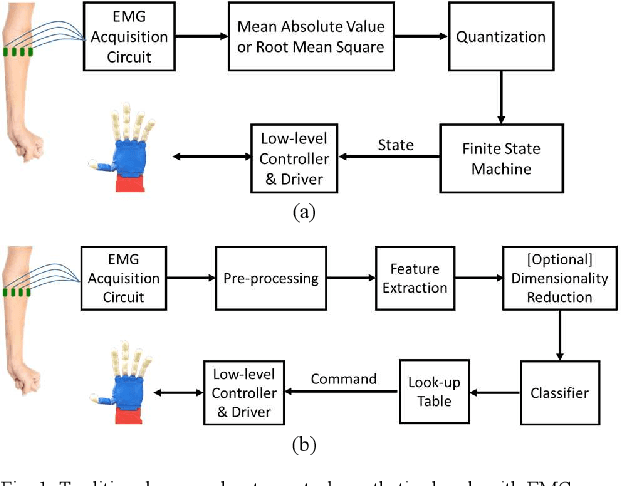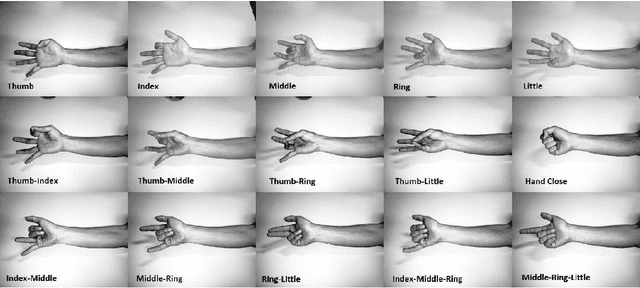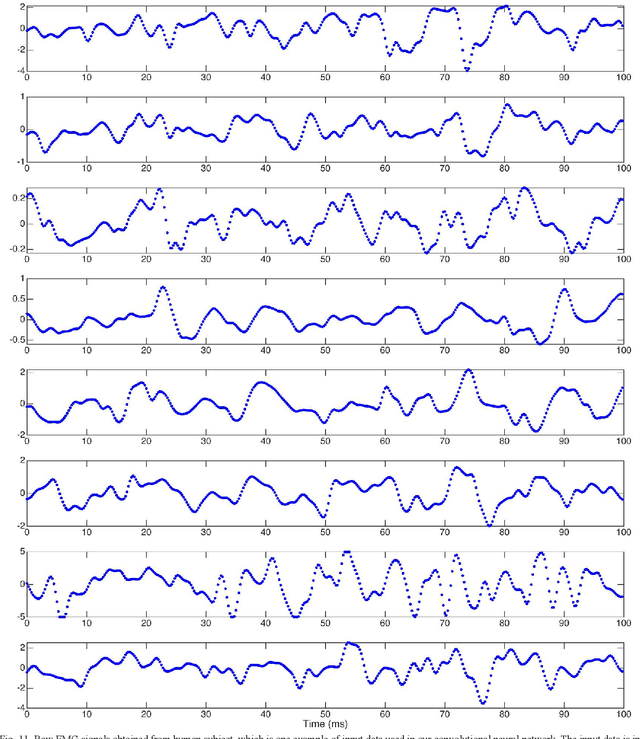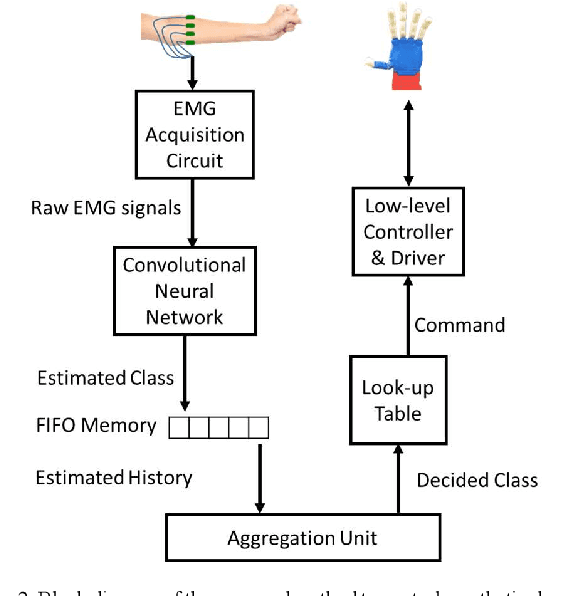Deep learning approach to control of prosthetic hands with electromyography signals
Paper and Code
Sep 21, 2019



Natural muscles provide mobility in response to nerve impulses. Electromyography (EMG) measures the electrical activity of muscles in response to a nerve's stimulation. In the past few decades, EMG signals have been used extensively in the identification of user intention to potentially control assistive devices such as smart wheelchairs, exoskeletons, and prosthetic devices. In the design of conventional assistive devices, developers optimize multiple subsystems independently. Feature extraction and feature description are essential subsystems of this approach. Therefore, researchers proposed various hand-crafted features to interpret EMG signals. However, the performance of conventional assistive devices is still unsatisfactory. In this paper, we propose a deep learning approach to control prosthetic hands with raw EMG signals. We use a novel deep convolutional neural network to eschew the feature-engineering step. Removing the feature extraction and feature description is an important step toward the paradigm of end-to-end optimization. Fine-tuning and personalization are additional advantages of our approach. The proposed approach is implemented in Python with TensorFlow deep learning library, and it runs in real-time in general-purpose graphics processing units of NVIDIA Jetson TX2 developer kit. Our results demonstrate the ability of our system to predict fingers position from raw EMG signals. We anticipate our EMG-based control system to be a starting point to design more sophisticated prosthetic hands. For example, a pressure measurement unit can be added to transfer the perception of the environment to the user. Furthermore, our system can be modified for other prosthetic devices.
 Add to Chrome
Add to Chrome Add to Firefox
Add to Firefox Add to Edge
Add to Edge